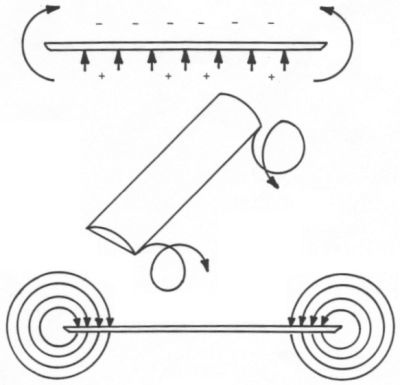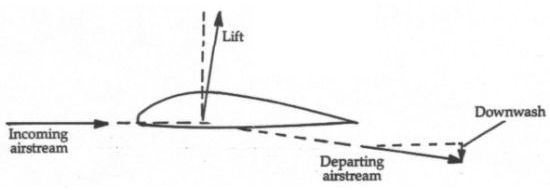|
||||||||||
|
|
||||||||||
|
||||||||||
|
|
||||||||||

More detail on these new wingtips can be seen in the following Boeing photos.


Now to get to your question. First of all, though you use the term "winglets," that isn't really a proper term to be applied in this case. Winglets are a special class of vertical surfaces that project upwards from a plane's wingtip, as exemplified by the experimental version of the KC-135 pictured below.

What Boeing has applied to the 767-400 are more accurately desribed as wingtip extensions since they are horizontal additions to the existing wing. While wingtip extensions are not all that unusual, what makes this particular example unique is the "raked," or swept back shape. Here's what the Boeing website has to say about them:
The 767-400ER features new, highly back-swept (raked) wing-tip extensions that increase the 767's 156-foot wingspan to 170 feet, 4 inches (51.9 m). The 7-foot-8-inch (2.4 m) wing extensions are designed to increase the aerodynamic efficiency of the wing. Another advantage of the raked wing-tip design is its simplicity. It is lightweight and bolts into place, with no additional design changes needed to the tip or leading edges of the 767-300 wing. This efficiency of design and economy of structure affords the 767-400ER more gate and taxiway flexibility. It can use the same gates as the DC-10-30, MD-11 and L-1011, unlike the A330-200, which must use gates sized by the industry for large airplanes such as the 747 and 777. The raked wing tip balances cruise efficiency and airplane weight to achieve improved range.

These trailing vortices create a "downwash" that increases the drag on an aircraft, and it is this portion of drag that is called induced drag.

As wingspan increases, the wingtips move farther apart from each other. This has the effect of weakening the relative impact of trailing vortices on the wing and decreases the induced drag experienced by the aircraft. So the most obvious advantage of the 767-400's wingtip extensions is simply the increase in wingspan that reduces drag and improves the aerodynamic efficiency of the wing. We say that reducing drag increases efficiency because less drag means the aircraft can fly farther using the same amount of fuel.
However, this effect doesn't explain the unique "raked" shape of the tips. Tips of this type are not often seen because of structural issues. Since the tips are so highly swept, the lift force generated by the extensions will act further back than the lift generated by the rest of the wing. This disparity creates a torsion motion causing the extensions to twist nose down. While this sort of wing "warping" is usually not desirable for structural reasons, perhaps Boeing engineers have used this torsional effect to create an aerodynamic washout.
Nonetheless, I'm still not entirely sure what aerodynamic advantages this sort of shape would offer over a more
traditional wing extension or a winglet. The only other possibility I can think of is that Boeing mentions how
simple it was to integrate these new extentions into the wing. These are essentially just bolted on to the
existing structure and require no additional modifications to the 767 wing. A winglet, on the other hand, would
likely require more extensive design work to strengthen the structure of the outboard wing. Such strengthening
would likely increase the overall weight in comparison with the new raked wingtip. Perhaps that is why Boeing
says, "The raked wing tip balances cruise efficiency and airplane weight to achieve improved range."
- answer by Joe Yoon, 2 November 2003
Related Topics:
Read More Articles:


|
Aircraft | Design | Ask Us | Shop | Search |

|
|
| About Us | Contact Us | Copyright © 1997- | |||
|
|
|||